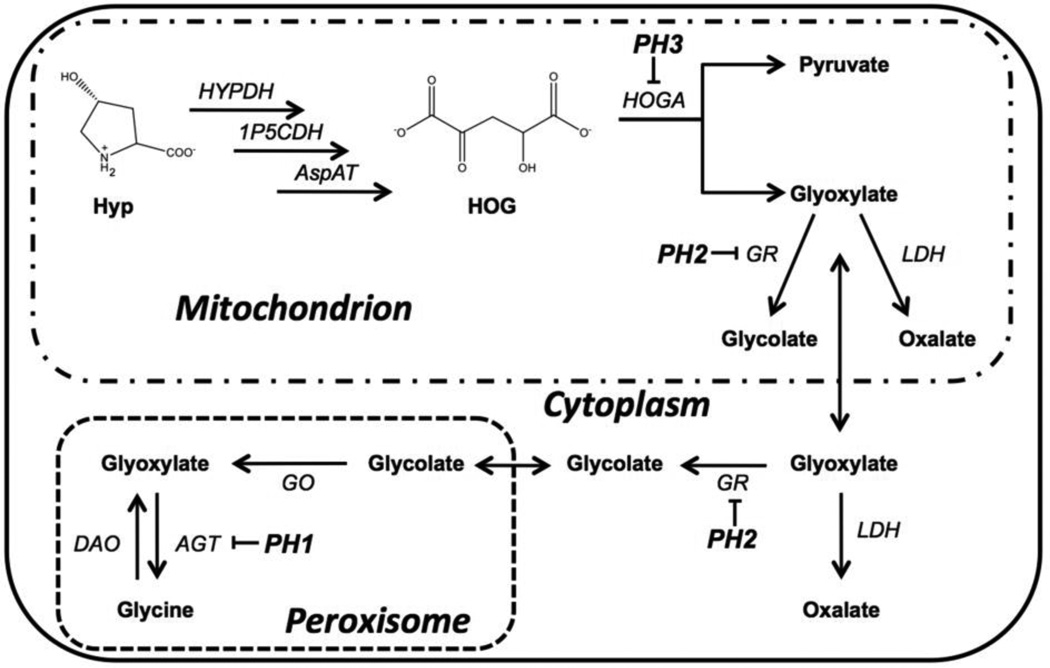Figure 1.
The intersection between hydroxyproline and glyoxylate metabolic pathways. Hyp is acted upon by hydroxyproline dehydrogenase (HYPDH), 1-pyrroline-5-carboxylate dehydrogenase (1P5CDH), and aspartate aminotransferase in succession to give 4-hydroxy-2-oxogluatarate (HOG). HOG is cleaved by HOG aldolase (HOGA) to yield pyruvate and glyoxylate. Glyoxylate is converted to glycolate by glyoxylate reductase (GR) in both the mitochondrial and cytoplasmic compartments. Conversion of glycolate back into glyoxylate by glycolate oxidase (GO) in the peroxisome results in the formation of glycine via alanine:glyoxylate aminotransferase (AGT). The enzymes mutated in PH1, PH2 and PH3 are indicated. The resulting rise in glyoxylate is shunted to oxalate formation by lactate dehydrogenase (LDH). D-amino acid oxidase (DAO) can also convert Glycine into glyoxylate, but this path is considered to be minor.

